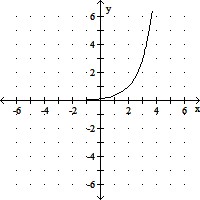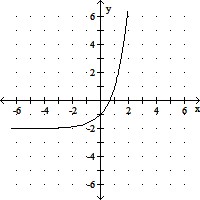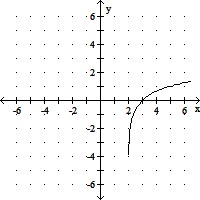Graph the function and analyze it for domain, range, continuity, increasing or decreasing behavior, symmetry, boundedness, extrema, asymptotes, and end behavior.f(x) = log (-2 - x)
What will be an ideal response?

The domain is (-?, -2), and the range is all real numbers. The function is continuous and decreasing on its domain. There is no symmetry. It is not bounded above or below. There are no local extrema. The vertical asymptote is x = -2. The end behavior is described by  f(x) = ?.
f(x) = ?.
You might also like to view...
Find an upper bound for the magnitude |E| of the error in the approximation f(x, y) ? L(x, y) at the given point over the given region R. at
at  ; R: |x| ? 0.1, |y| ? 0.1
; R: |x| ? 0.1, |y| ? 0.1
A. |E| ? 11.4731 B. |E| ? 5.7366 C. |E| ? 10.039 D. |E| ? 20.078
Solve the problem.Two pulleys of diameter 9 meters and 3 meters are connected by a belt. The larger pulley rotates 47 times per minute. Find the angular speed of the smaller pulley.
A. 141? rad/min B. 282? rad/min C. 423? rad/min D. 212? rad/min
Use the equation and the corresponding graph for the quadratic function to find what is requested.f(x) = (x - 3)2 - 6 Find the y-intercept.
Find the y-intercept.
A. (0, 3) B. (-3, 0) C. (0, 4) D. (3, 0)
Graph the function.f(x) = log3(x - 2)
A. 
B. 
C. 
D. 